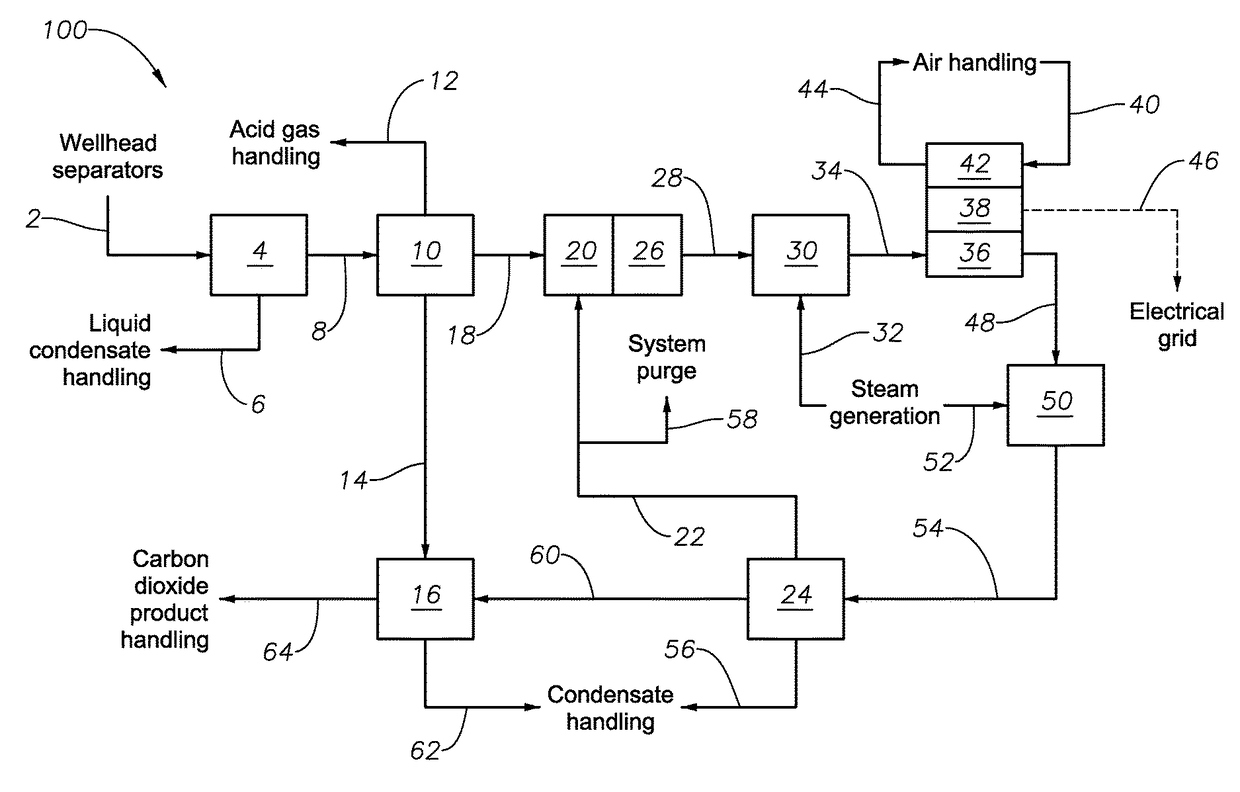System and method for generating power and enhanced oil recovery
a technology of fuel cell and system, applied in the field of solid oxide fuel cell (sofc) process and system, can solve the problems of uneconomical or physically impracticable, local power production facilities, and power conveyance infrastructure, and achieve the effects of reducing infrastructure, maximizing the number and types of potential feedstocks, and reducing the overall external requirement for fuels
- Summary
- Abstract
- Description
- Claims
- Application Information
AI Technical Summary
Benefits of technology
Problems solved by technology
Method used
Image
Examples
examples
[0083]Tables 1-4 show several ASPEN process simulator (Aspen Technologies; Burlington, Mass.) modeling results for a portion of the SOFC system shown in FIG. 1. Specifically, the simulations model the behavior of the pre-reformer at various conditions, including the desulfurized process gas composition, reformation temperature and SCR. The model shows the expected reformed process gas composition. Eq. 1 is the basis for determining the SCR value for each modeling simulation. Eq. 2 is the basis for determining the value of MSR for each expected reformed process gas composition. Tables 1-4 show the entered and produced values on a dry mole percent basis.
[0084]
TABLE 1Pre-reformer Inlet and Outlet CompositionsDry mole % basis; Temperature = 300° C.DesulfurizedReformed Process GasProcess GasCompositionSCR:Composition0.51.01.5Componentsmole %mole %mole %mole %C2H456.8787.8986.8085.94C2H622.790.000.000.00C3H812.380.000.000.00C4H104.270.000.000.00C5H121.630.000.000.00CO0.000.030.010.01CO20....
PUM
| Property | Measurement | Unit |
|---|---|---|
| pressure | aaaaa | aaaaa |
| temperature | aaaaa | aaaaa |
| temperature | aaaaa | aaaaa |
Abstract
Description
Claims
Application Information
 Login to View More
Login to View More - R&D
- Intellectual Property
- Life Sciences
- Materials
- Tech Scout
- Unparalleled Data Quality
- Higher Quality Content
- 60% Fewer Hallucinations
Browse by: Latest US Patents, China's latest patents, Technical Efficacy Thesaurus, Application Domain, Technology Topic, Popular Technical Reports.
© 2025 PatSnap. All rights reserved.Legal|Privacy policy|Modern Slavery Act Transparency Statement|Sitemap|About US| Contact US: help@patsnap.com


